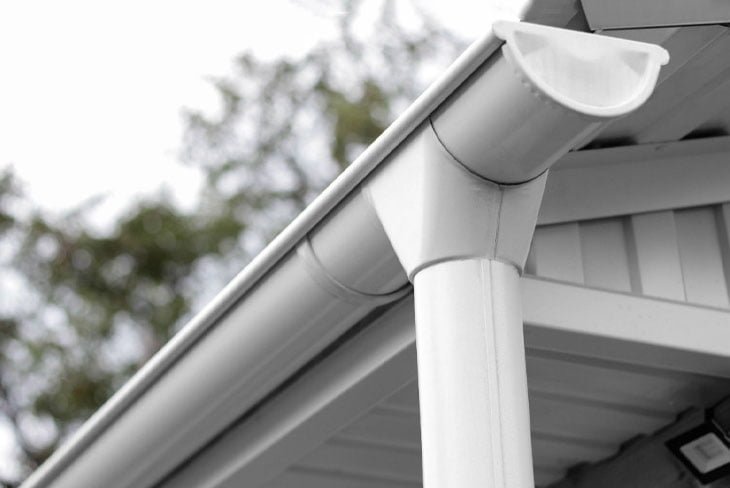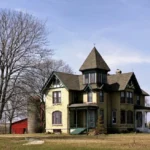Are vinyl gutters the best choice for your home, or could they be causing more problems than they solve?
Vinyl gutters have gained popularity among homeowners due to their perceived affordability and ease of installation. But are they a wise investment? This article aims to explore the disadvantages of vinyl gutters, shedding light on why they may not be the best choice for your home in the long run. By understanding their limitations, you can make an informed decision and explore more durable and environmentally friendly alternatives.
Short Lifespan
One of the biggest drawbacks of vinyl gutters is their relatively short lifespan. In ideal conditions, vinyl gutters typically last up to 20 years. However, this duration is significantly reduced when subjected to extreme weather conditions. For example, in regions with harsh winters, vinyl gutters may only survive for a fraction of that time.
In contrast, alternative gutter materials offer much longer lifespans:
| Material | Average Lifespan |
|---|---|
| Vinyl | 20 years |
| Aluminum | 20-30 years |
| Steel | 20-50 years |
| Copper | 50+ years |
| Zinc | 50+ years |
As the table shows, materials like copper and zinc can last more than twice as long as vinyl gutters. This longevity can result in lower long-term costs and fewer replacements over the life of a home.
Vulnerability to Extreme Weather
Vinyl gutters are particularly susceptible to damage from extreme weather conditions. In areas with heavy snowfall and ice, vinyl gutters can struggle to maintain their integrity. The weight of accumulated snow and ice can cause these gutters to sag, bend, or even break.
Cold temperatures pose another threat to vinyl gutters. The material can become brittle in freezing conditions, making it more prone to cracking and breaking. On the other hand, hot temperatures can cause vinyl gutters to warp or deform, affecting their ability to channel water effectively.
These vulnerabilities to weather extremes can lead to:
- Reduced efficiency in water drainage
- Increased risk of water damage to the home’s foundation
- More frequent repairs or replacements
Homeowners in regions with variable or harsh climates may find that vinyl gutters require more maintenance and have a shorter functional lifespan than expected.
Structural Weakness
Compared to metal gutters, vinyl gutters have inherent structural weaknesses. They are not as rigid or durable as their metal counterparts, which can lead to several issues:
- Buckling and bending under heavy loads
- Separation at the seams
- Breakage due to the weight of precipitation
These structural weaknesses become particularly evident during winter months or in areas with high rainfall. The weight of snow, ice, or accumulated water can cause vinyl gutters to sag or pull away from the fascia board. This can result in water leakage and potential damage to the home’s exterior.
Metal gutters, such as those made from aluminum or steel, typically offer greater structural integrity. They can withstand heavier loads without deforming or breaking, making them a more reliable choice for areas prone to severe weather conditions.
Color Fading
While vinyl gutters are available in a variety of colors to match different home exteriors, they are prone to fading over time. Prolonged exposure to sunlight can cause the color of vinyl gutters to deteriorate, leading to a dull or washed-out appearance.
This color fading can have several negative impacts:
- Reduced curb appeal
- Mismatched appearance with the home’s exterior
- Necessity for painting or replacement to restore aesthetics
Unlike metal gutters that can be repainted, vinyl gutters are challenging to refinish once they’ve faded. This means that homeowners may need to replace the entire gutter system to restore the desired appearance, leading to additional costs and hassle.
No Seamless Option
One significant limitation of vinyl gutters is the lack of seamless options. Vinyl gutters are typically sold in sections that need to be joined together during installation. These joints or seams can become weak points in the gutter system over time.
Issues associated with sectional vinyl gutters include:
- Increased risk of leaks at the seams
- Debris accumulation at connection points
- More frequent maintenance to ensure proper sealing
In contrast, seamless gutters, often made from aluminum, offer a continuous length of gutter custom-fit to the home. This reduces the number of joints and potential leak points, resulting in a more efficient and low-maintenance gutter system.
Environmental Impact
The environmental implications of vinyl gutters are a growing concern for many homeowners. Vinyl gutters are made from polyvinyl chloride (PVC), a type of plastic that has several environmental drawbacks:
- PVC production releases harmful pollutants into the environment
- Vinyl gutters are not biodegradable
- Recycling PVC can be challenging and is not widely available
The production of PVC involves the use of toxic chemicals, including chlorine and vinyl chloride monomer. These substances can have negative impacts on air and water quality. Additionally, when vinyl gutters reach the end of their lifespan, they often end up in landfills where they can take hundreds of years to break down.
For environmentally conscious homeowners, alternative gutter materials like aluminum or steel may be more appealing. These metals are more easily recycled and have a lower overall environmental impact.
| Material | Recyclability | Environmental Impact |
|---|---|---|
| Vinyl | Low | High |
| Aluminum | High | Moderate |
| Steel | High | Moderate |
| Copper | High | Low |
This table illustrates the differences in recyclability and environmental impact among various gutter materials. Vinyl consistently ranks lower in terms of environmental friendliness compared to metal alternatives.
Conclusion
While vinyl gutters may seem like an attractive option due to their low initial cost and easy installation, they come with several significant disadvantages. Their short lifespan, vulnerability to extreme weather, structural weaknesses, and environmental impact are all factors that homeowners should carefully consider.
The limitations of vinyl gutters include:
- A lifespan of only up to 20 years in ideal conditions
- Susceptibility to damage from cold, heat, and heavy precipitation
- Structural weaknesses leading to sagging and breakage
- Color fading that affects aesthetics
- Lack of seamless options, increasing the risk of leaks
- Negative environmental impact due to PVC production and disposal
Given these drawbacks, homeowners may want to explore alternative gutter materials that offer greater durability, longevity, and environmental sustainability. Materials such as aluminum, steel, or copper can provide a more robust and long-lasting solution for managing rainwater runoff.
Ultimately, the choice of gutter material should be based on factors including local climate, budget, aesthetic preferences, and environmental considerations. By weighing the pros and cons of different options, homeowners can make an informed decision that best suits their needs and values.




No Comment! Be the first one.